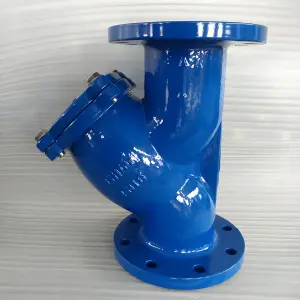Ensuring clean and uninterrupted water flow is vital for residential, commercial, and industrial applications. A Secondary Water Supply Strainer plays a key role in protecting pipelines, pumps, and water treatment equipment by filtering out debris and impurities from the water source. This component not only safeguards infrastructure but also improves system efficiency and extends equipment lifespan—making it an essential part of modern water supply networks.
What Is a Secondary Water Supply Strainer?
A Secondary Water Supply Strainer is a filtration device installed in a water distribution system to remove suspended solids and foreign particles. It acts as a secondary layer of protection, typically positioned downstream of the main filtration system.
Key functions include:
-
Preventing clogging in pipes, valves, and meters
-
Enhancing the performance of pumps and control systems
-
Ensuring consistent water quality for end-users
-
Reducing maintenance frequency and operational downtime
Why Secondary Water Strainers Are Essential
-
System Protection: Captures rust, sand, and other contaminants to prevent damage to pumps, meters, and valves.
-
Extended Equipment Life: Clean water reduces mechanical wear and lowers replacement costs.
-
Improved Efficiency: Maintains steady flow rates and stable pressure throughout the system.
-
Regulatory Compliance: Helps meet municipal and industrial water safety and hygiene standards.
Types of Secondary Water Supply Strainers
Depending on your system’s size and purpose, several configurations are available:
-
Y-Type Strainer: Compact, ideal for tight installations and moderate flow.
-
Basket Strainer: Provides a larger filtration area for high-flow systems.
-
Automatic Self-Cleaning Strainer: Supports continuous operation with minimal maintenance.
-
Duplex Strainer: Allows one side to operate while the other is cleaned, ensuring uninterrupted performance.
Installation and Maintenance Tips
To achieve optimal results, keep these practices in mind:
-
Install the strainer at the lowest pressure point in the system for better debris capture.
-
Clean or replace filter elements regularly based on flow rate and contamination level.
-
Monitor pressure drop across the strainer to identify clogging early.
-
Select corrosion-resistant materials such as stainless steel or bronze for long-term reliability.
Summary
A Secondary Water Supply Strainer is an indispensable part of any water management system. It protects essential equipment, stabilizes performance, and extends service life while maintaining consistent water quality. Investing in the right strainer ensures safer, more efficient, and cost-effective operation for municipal, industrial, and commercial users alike.
FAQ
Q1: What’s the difference between a primary and secondary water strainer?
A primary strainer performs initial coarse filtration, while a secondary strainer provides fine filtration downstream to protect precision components.
Q2: How often should a secondary water strainer be cleaned?
Cleaning frequency depends on water quality and flow conditions—typically every 2–4 weeks in industrial settings.
Q3: What materials are recommended for secondary strainers?
Stainless steel, brass, and bronze are the most durable and corrosion-resistant choices.
Q4: Can a secondary water strainer be used for drinking water systems?
Yes, as long as it’s made from food-grade or certified materials suitable for potable water use.
Post time: Nov-11-2025






